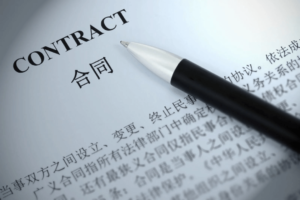Global trade with China is more integral than ever to businesses worldwide. However, engaging with Chinese manufacturers requires careful verification to ensure you deal with a legitimate and reliable entity. This guide offers comprehensive steps for verifying a Chinese factory, ensuring the business is genuine and not fraudulent.
Table of Contents
ToggleIdentifying the Real Chinese Business Name: A Critical First Step in Verification
The process of verifying a Chinese factory begins fundamentally by ascertaining its official Chinese business name. This name differs from the English translation typically used in international dealings. It is the legal designation under which the company is registered in China, reflecting its authentic identity in official and government records.
Importance of the Official Chinese Name
The official Chinese business name is crucial as it is linked directly to all legal, operational, and financial documentation of the company. This name is the key to unlocking a wealth of information necessary for thorough verification, as it is used across all formal contracts, legal documents, and government databases.
Steps to Confirm the Business Name Registration
Once you secure the real Chinese business name, your next step is to verify this name’s registration with the appropriate Chinese authorities. This verification is pivotal as it:
- Confirms Legal Existence: Ensures that the business is legally recognized, a fundamental check that confirms you are dealing with a legitimate entity.
- Foundation for Further Due Diligence: Provides a basis for additional verification processes such as examining the company’s operational history, financial stability, and legal compliance.
- Requires Specialist Knowledge: Since this process involves navigating specific regulatory frameworks, it may be necessary to engage with professionals who specialize in Chinese business practices or legal advisors who can effectively facilitate this verification.
Why This Step is Essential
Identifying and verifying the official Chinese business name is more than a procedural step; it’s a crucial safeguard. It ensures that any further business engagement is based on a verified legal foundation. This not only mitigates the risk of fraud but also establishes a reliable groundwork for future business interactions. Ensuring that a factory is registered under its lawful name in China protects your investments and fosters a transparent and secure business relationship.
Red Flags in Contracting Practices: Identifying Risks in Cross-Border Contractual Arrangements
When dealing with manufacturers, particularly in China, it is crucial to remain vigilant during the contracting phase. A notable red flag arises when a Chinese manufacturer proposes signing a contract under the name of a different company, especially one based in a jurisdiction like Hong Kong. This practice is common and can be a strong indicator of potential fraudulent intentions or attempts to avoid legal responsibilities.
The Strategy of Using Hong Kong-based Entities
Many Chinese manufacturers establish linked companies in Hong Kong to leverage the region’s separate legal system and international business reputation. While this can be a legitimate business strategy for operational flexibility and tax benefits, it can also be used to dodge legal accountability. When a contract is signed with a Hong Kong-based entity rather than the actual manufacturing company in China, it complicates enforcement and accountability. Here’s how this practice poses risks:
- Complicated Legal Recourse: Should disputes arise, pursuing legal actions can become significantly more complex. The separation between the manufacturing operations in mainland China and the contracted entity in Hong Kong can obscure direct responsibility. This separation can make it difficult to enforce contract terms directly with the factory that is performing the manufacturing.
- Liability Avoidance: By distancing the legal entity in the contract from the manufacturing operations, companies aim to shield themselves from direct liability. This can be particularly problematic in cases of quality disputes, delivery issues, or contractual non-compliance. The Hong Kong entity, often little more than a legal formality, may have limited assets or operational depth, making it difficult to extract compensation or enforce corrections.
- Regulatory Arbitrage: Utilizing Hong Kong’s distinct legal environment allows companies to exploit regulatory differences. This can disadvantage foreign partners unfamiliar with the nuances of regional legal frameworks, potentially leading to weaker protection under the law than anticipated.
Due Diligence is Key
To mitigate these risks, it’s essential to conduct thorough due diligence. Verify the relationship between the Hong Kong entity and the mainland Chinese manufacturer. Understand the legal implications of any contractual arrangement and consider consulting with legal experts familiar with both Hong Kong and mainland Chinese commercial laws. This approach will help ensure that your business dealings are secure and that you are adequately prepared to address any legal challenges that may arise.
Importance of Official Business Stamps in Chinese Business Practices
In China, the business stamp, also known as a chop, is not just a formal requirement but a cornerstone of legal authenticity and business integrity. These stamps carry significant legal weight, as they are the primary means by which a company officially endorses documents. Under Chinese law, all legally registered companies must possess and use their designated chops for various official transactions, from contracts to everyday operational paperwork.
The Role of Business Stamps in Chinese Commerce
Business stamps in China are the definitive mark of a company’s approval on any paperwork. They are legally binding and used in lieu of signatures, which are found in many Western business practices. Each chop is unique and registered with relevant authorities, tying the stamp explicitly to the business’s legal identity. This practice underscores the chop’s importance as a security measure and a standard of business operations within the country.
Red Flags Associated with Business Stamps
The absence of a business stamp or the presence of discrepancies in the company name and business number on the stamp should raise immediate concerns for several reasons:
- Verification of Authenticity: The stamp is a critical tool for verifying the authenticity of a document. Its absence can indicate that a document is not officially sanctioned by the company, which could suggest potential fraud or unauthorized transactions.
- Legal Validity: Documents without properly stamped approval may not be legally valid. This can pose significant risks if disputes arise, as the unstamped documents might not hold up in a court of law as evidence of agreed terms.
- Company Identity Consistency: Discrepancies in the information on a stamp—such as a mismatch in the business name or number—can indicate that the stamp may be forged or that the document may be associated with a different or possibly non-existent entity. Such issues can complicate legal matters or signal fraudulent activities.
Preventative Measures and Best Practices
To safeguard against these risks, it is essential for businesses engaging with Chinese companies to:
- Inspect the Chop: Always check the business stamp for consistency with the company’s registered information. This should align with what is publicly or officially recorded in government or commercial registries.
- Understand the Types of Chops: Familiarize yourself with the different types of chops that a company may use. Some are specific to contracts, others to financial transactions, and some to internal documents. Knowing the purpose of each can help identify misuse or irregularities.
- Request Verification: If doubts arise regarding the authenticity of a chop, request verification directly from the company or consult with legal experts who can perform due diligence to ensure the legitimacy of the stamps being used.
The use of official business stamps is a critical component of ensuring the legality and integrity of business dealings in China. Understanding their importance, recognizing potential red flags, and taking proactive steps to verify authenticity is crucial in maintaining secure and lawful international business operations.
Analyzing Capitalization and Ownership of Chinese Manufacturers
Understanding the capitalization and ownership structure of Chinese manufacturers is crucial for assessing their financial stability and operational integrity.
Key Aspects of Financial Health
Evaluating a manufacturer’s financial health involves examining its capital resources and funding sources. A well-capitalized manufacturer is more likely to be resilient, maintaining smooth operations even during economic downturns.
Ownership and Conflicts of Interest
Reviewing the ownership structure can reveal potential conflicts of interest among company officials and shareholders. It’s important to ensure that the owners and their business practices align with ethical standards, particularly regarding transparency and accountability.
Monitoring for Operational Red Flags
Keep an eye on any signs indicating financial troubles or mismanagement within the factory. For instance, if the company appears on lists like “irregular activities” or “operations canceled,” it suggests violations of Chinese commercial laws or regulations, signaling significant risk.
Verifying Scope of Operations and Asset Holdings of Chinese Manufacturers
When engaging with Chinese manufacturers, it is crucial to ensure that their operations and asset holdings not only comply with local regulations but also align with the specific permissions granted by the Chinese government. This verification process is essential to establish the legitimacy and operational capacity of the manufacturer.
Confirming Legitimate Business Activities
Firstly, verify that the manufacturer’s business activities are sanctioned by the Chinese government by examining their business license. This license provides a detailed outline of the nature of the business activities that are officially permitted. Ensuring that the manufacturer operates within these parameters is fundamental to avoid legal complications and ensure they are a reliable partner.
Reviewing Asset Holdings and Intellectual Property
In addition to the business license, it’s vital to assess the manufacturer’s asset holdings and intellectual property. These assets not only provide a tangible guarantee of the manufacturer’s operational viability but also signify a lower risk of fraudulent activities. Companies with substantial assets and legitimate intellectual property are generally more stable and committed to maintaining a positive business reputation.
- Asset Holdings: Check the extent and value of the manufacturer’s physical assets, including machinery, buildings, and equipment. These assets are crucial for the business’s ongoing stability and capacity.
- Intellectual Property: Verify the ownership and validity of intellectual property rights claimed by the manufacturer. This includes patents, trademarks, and copyrights, which are critical components that can influence the manufacturer’s competitive edge and innovation capabilities.
Conducting comprehensive due diligence on these aspects is not only about verifying legality but also about assessing the manufacturer’s capability and reliability as a business partner. Ensuring that the scope of their operations is appropriately licensed and supported by adequate assets protects your interests and enhances the security of your business engagements with them.
Legal History as a Predictor of Reliability in Business Partnerships
When evaluating potential business partners, especially manufacturers, one of the most revealing aspects to consider is their legal history. A manufacturer’s legal track record provides valuable insights into its operational integrity, ethical standards, and overall reliability. A history replete with frequent legal disputes, particularly those involving contract breaches or quality issues, serves as a strong indicator of underlying problems in the company’s management or a fundamental disregard for legal obligations.
Assessing the Impact of Legal Disputes
Legal disputes can stem from various issues, ranging from minor misunderstandings to serious violations of contract terms. However, when such disputes are frequent and involve core aspects of business, such as contract commitments and product quality, they raise serious concerns:
- Management and Operational Deficiencies: Regular involvement in legal battles can result from poor management practices or inadequate operational controls. These deficiencies might include failing to meet production deadlines, not adhering to agreed specifications, or mishandling customer relations.
- Financial Stability and Prioritization: Frequent legal issues can also strain a manufacturer’s financial resources, diverting funds away from essential business operations to cover legal costs. This can further destabilize the company and impact its ability to fulfill ongoing business obligations.
- Reputational Risk: Companies known for frequent legal disputes may carry reputational risks, affecting their relationships with other businesses and customers. Associating with such companies can tarnish your business’s reputation and deter potential business partners.
The Significance of Legal History in Business Evaluations
Understanding a manufacturer’s legal history is not merely about noting the number of cases they have been involved in but also about understanding the nature of these disputes and their outcomes. This assessment should include:
- Patterns of Behavior: Identifying patterns in the types of legal issues encountered can provide insights into systemic problems within the company. For example, repeated breaches of contract could indicate a habitual nonchalance towards business commitments.
- Resolution and Responsiveness: A company’s handling of legal disputes—whether they are resolved amicably or result in prolonged litigation—can also indicate its willingness to resolve issues amicably and comply with business norms.
- Quality of Legal Disputes: Not all legal disputes necessarily signify negative attributes. In some cases, pursuing legal action may reflect a company’s commitment to uphold its rights and standards. The context and quality of the legal disputes are, therefore, crucial in making a balanced evaluation.
A manufacturer’s legal history is a critical factor that can substantially inform the reliability and advisability of entering into business partnerships. By thoroughly evaluating this history and taking proactive steps to safeguard your interests, you can make more informed decisions and establish more secure and productive business relationships.
Conclusion
Verifying a Chinese factory is an indispensable step for businesses looking to establish long-term, reliable trading relations. By carefully examining the manufacturer’s legal status, operational health, and historical business practices, companies can protect themselves from potential fraud and establish fruitful business relations with legitimate Chinese manufacturers. Ensuring due diligence not only mitigates risks but also sets the foundation for successful international trade.








